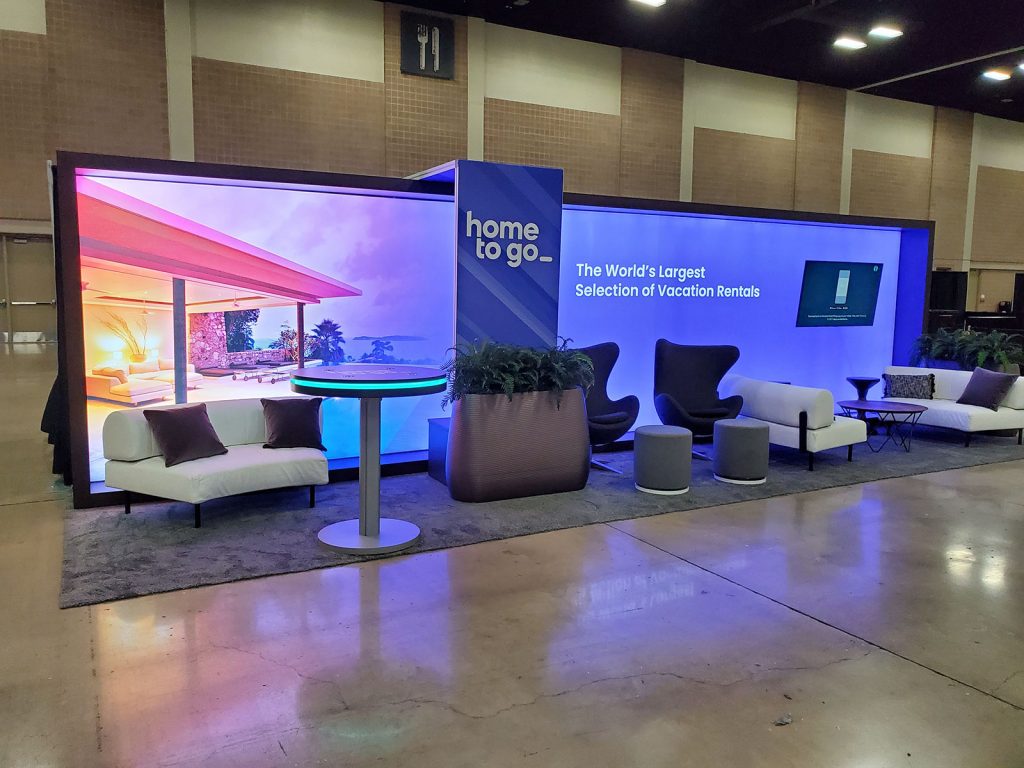
LED Fabric Lightboxes, in an array of shapes and sizes, are the single biggest change to post-pandemic trade shows, events, and signage. They’re EVERYWHERE! And it makes sense. Lightbox Exhibits are cost-effective, easy to assemble and install, and mesmerizing. So, what happened in the past 2-3 years that led to the proliferation of fabric lightboxes? Three things basically: Cost, Convenience, and Comfort.
What is a Fabric Lightbox?
Before we explore these three “C’s,” let’s define and describe what we mean by LED Fabric Lightboxes, starting the fabric. Over the past 10 years, silicone edge graphics have become the large format graphic for trade show displays. These are dye-sublimated or direct print graphics on fabric with a silicone welting sewn to the perimeter. The silicone welting is folded under the fabric and inserted into a channel along the edge of an aluminum or plastic frame. Because SEG graphics hug the outside channel of the frame (in most cases), it minimizes the appearance of the frame, thereby maximizing the overall graphic impact. In short, more graphics with less frame.
When those graphics are backlit, there’s, even more, WOW! with brighter, more vivid colors. The attached LED lights can backlight one- or two-sided graphics as back walls, towers, headers, and even storage closets.
The 3 C’s of Fabric Lightboxes
Cost: Backlighting has always been expensive and complicated. It required fragile fluorescent tubes, a graphic printed on translucent material, and a dedicated frame or enclosure. LED lights changed all that. They’re inexpensive (especially over time), durable, and available in a variety of temperatures/warmth and colors. The additional cost whether it’s for a large tower in an island exhibit or a backlit ad in an airport is both affordable and worth the increased visibility.
Convenience: Most LED lights are rated between 35,000 to 50,000 hours. Compare that to 750-2000 hours for incandescent lights and 24,000 to 36,000 for fluorescent bulbs. LED modules are easy to mount to frames or reflective surfaces and come in a wide array of sizes.
Comfortable: Both exhibit builders and ad agencies are well-versed in how to design graphics and structures to maximize the impact of backlighting. Wading through the electrical requirements no longer requires an electrical engineering degree. Just some practical experience working LED components and some friendly advice from an electrician on larger jobs.
6 Fabric Lightbox Examples by Classic Exhibits
Many fabric lightboxes are squares and rectangles consisting of a frame, graphic, LED lights, and a base or feet. But there can be so much more. The examples below are lightboxes with monitors and shelves as inlines, islands, and kiosks. There’s even a hexagon wall-mounted version for a lobby.
VK-1977 | 10 x 10 – SuperNova Lightbox frames have two distinct advantages: strength and lightweight. The engineered aluminum construction means they can ship in a portable case but are strong enough to hold a large monitor.
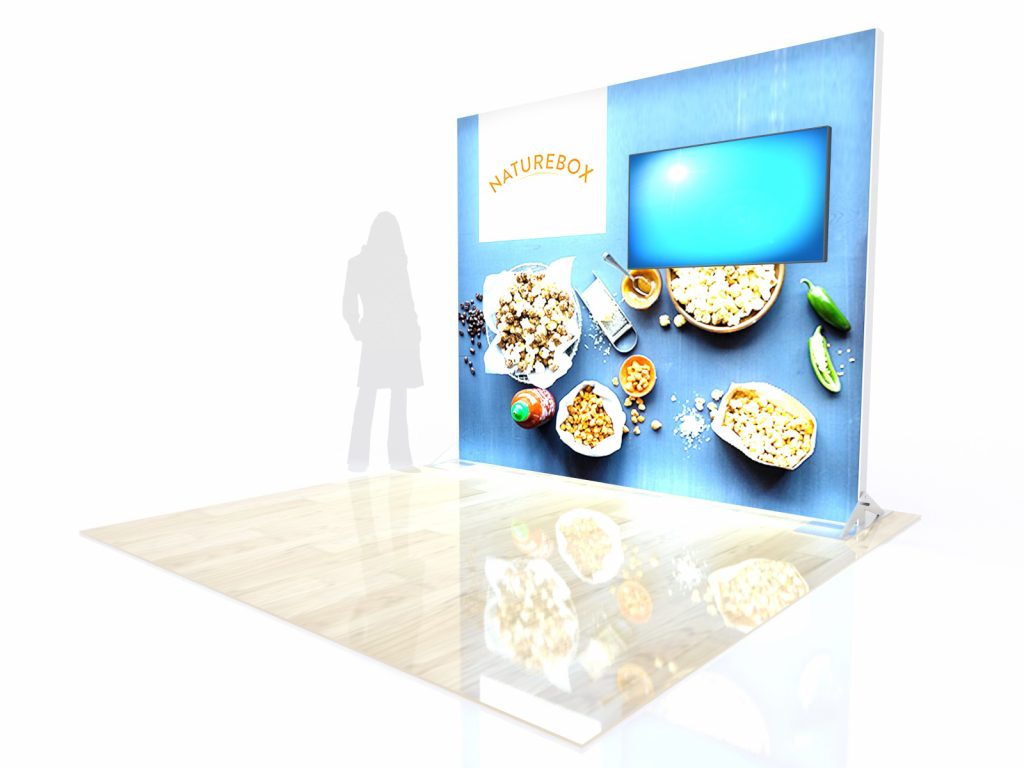
VK-4030 | 10 x 20 – Bigger is better when it comes to a lightbox. The custom VK-4030 features nearly 20 ft. of backlit graphics, along with a large monitor mount, charging table, and tablet kiosks.
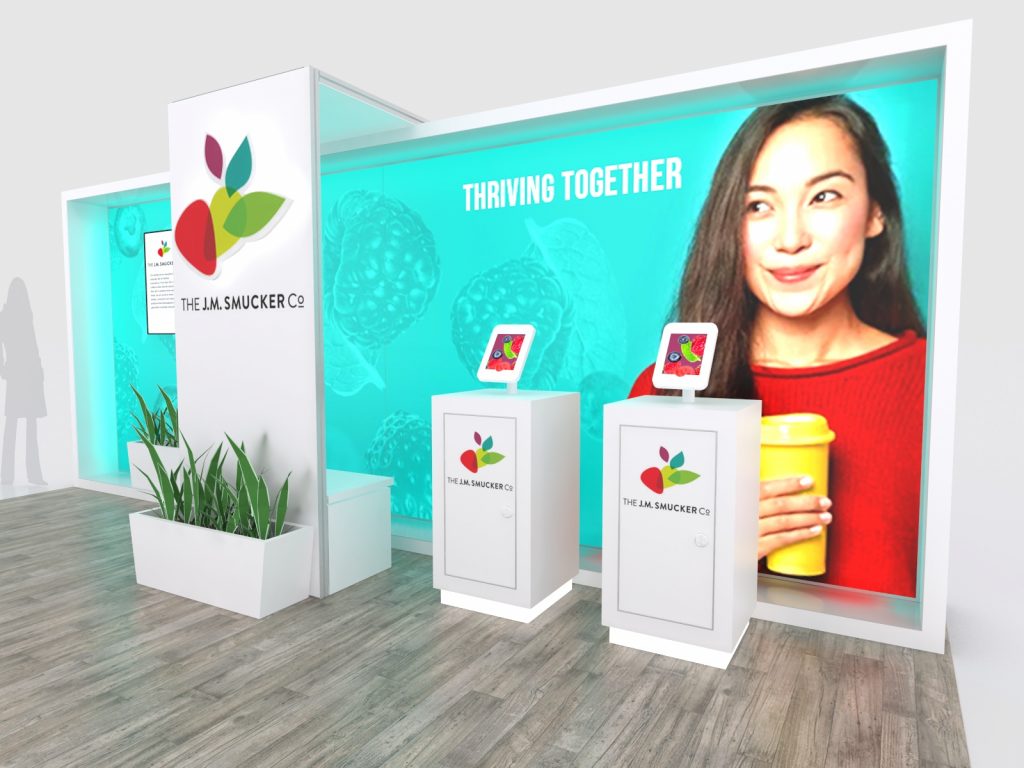
GK-5152 | 20 x 20 – Island exhibits offer maximum impact on the show floor, and an island with (3) 15 ft. high double-sided lightboxes can’t be ignored. Available for purchase and rental.
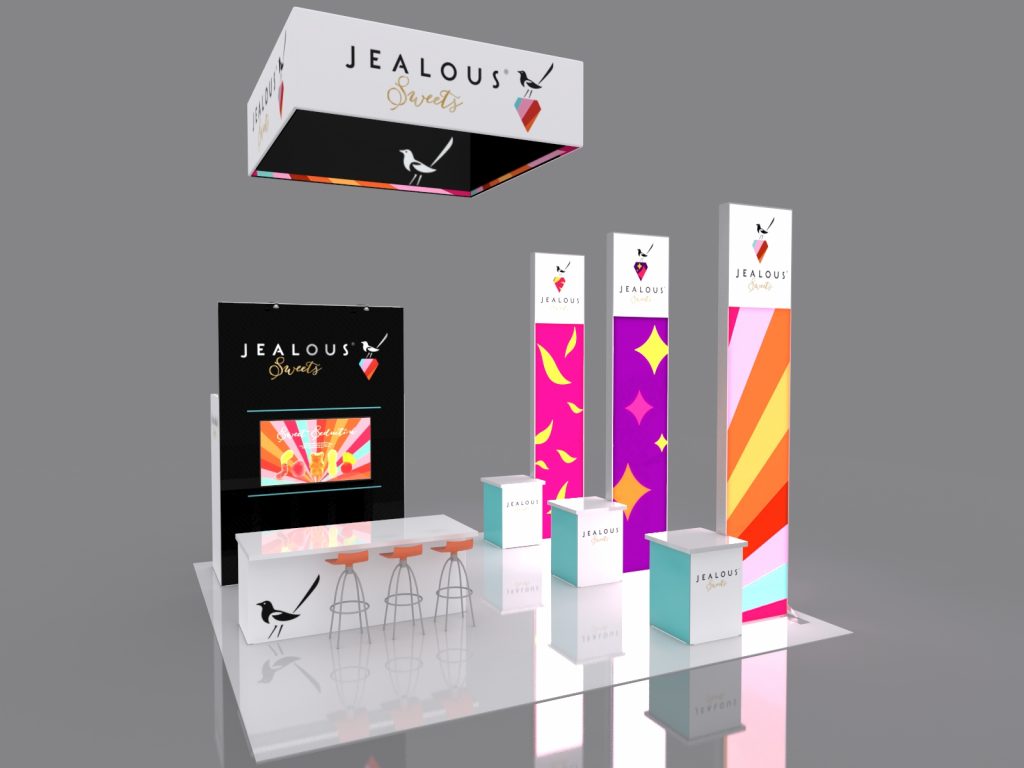
RE-2053 | 10 x 20 – Many exhibitors would rather rent than purchase a trade show display. The RE-2053 inline rental features three large backlit graphics on the back wall and two backlit counts with locking storage.
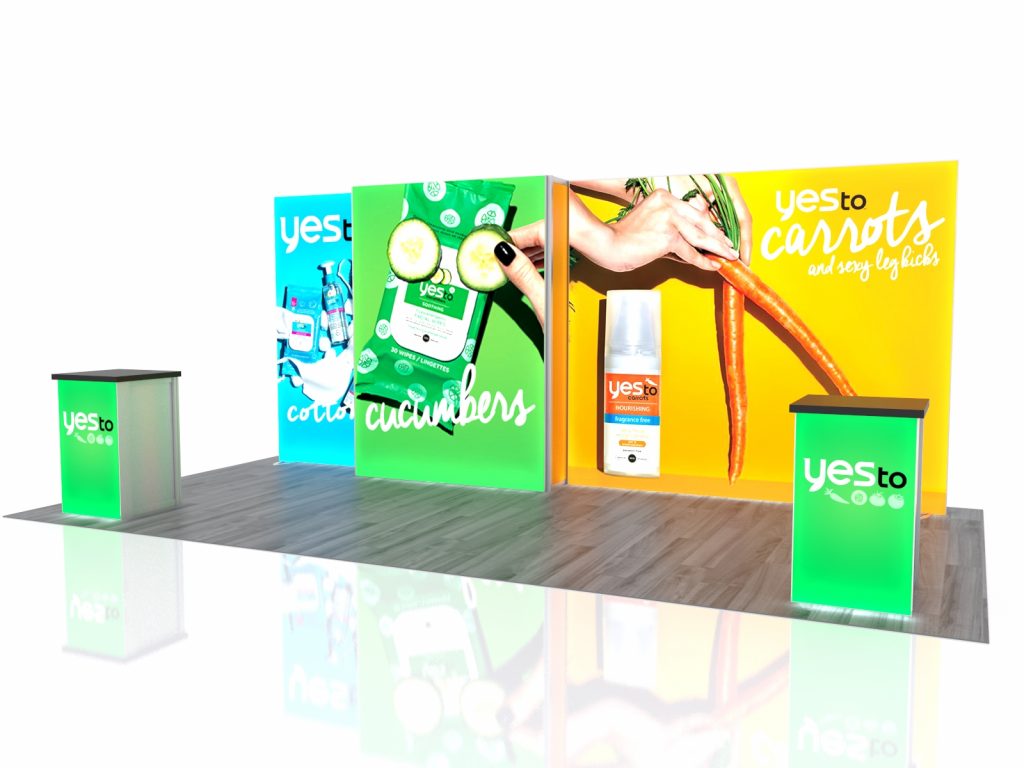
MOD-1618D | Product Kiosk – This free-standing double-sided lightbox combines backlit graphics with shelving. The shelves can be adjusted or removed depending on the product requirements.
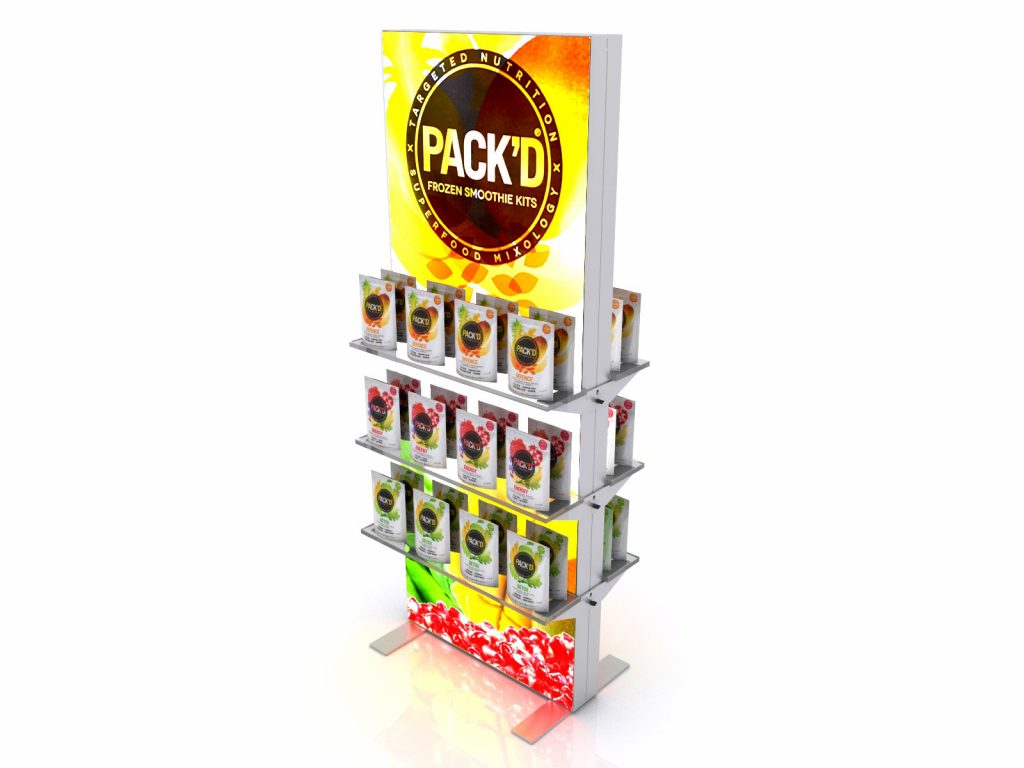
SLBW-9595 | Wall-mounted Lightbox – Lobbies, conference rooms, or hallways are perfect for an LED lightbox. The SuperNova Wall Frames can be cut to any size, and the vibrant fabric graphics are cost-effective and easy to replace whenever the seasons change or it’s time to promote an event.
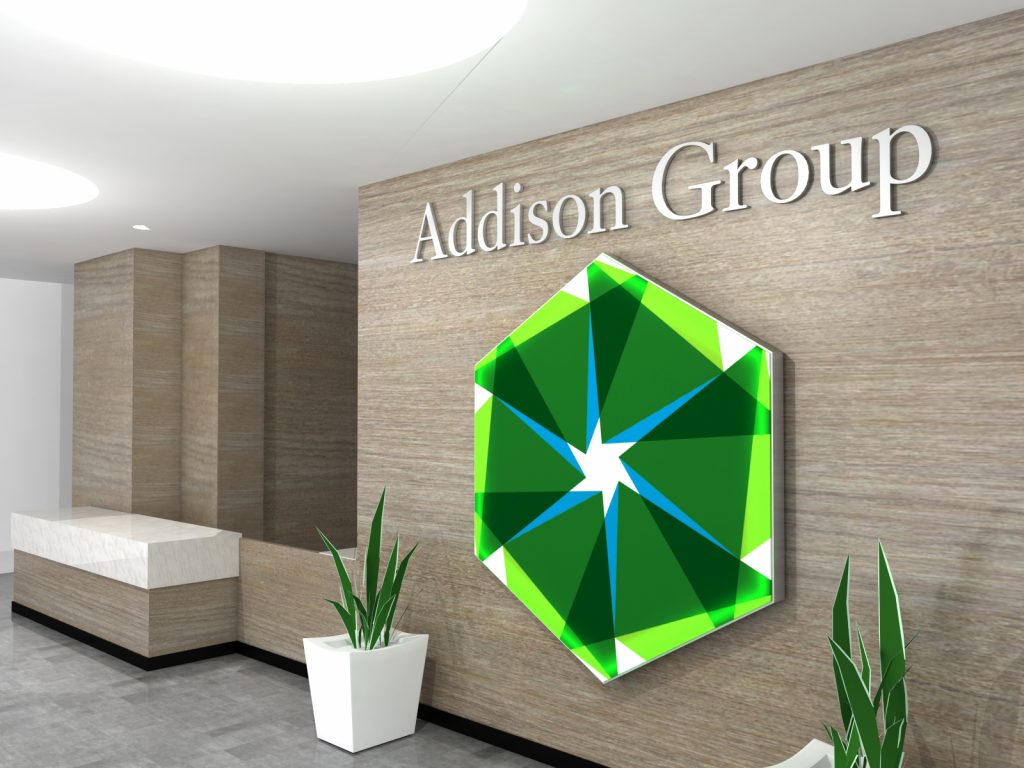
9 Factors to Consider When Purchasing an LED Lightbox Display
#1. Hardness and Durability: Most LED Lightboxes start with an SEG aluminum frame. Every manufacturer engineers their frames using aluminum of varying hardness and durability. Less expensive lightboxes use softer aluminum because it’s cheaper. But cheaper aluminum scratches easily and tarnishes quickly. In addition, the wall thickness is often so thin that structural rigidity is compromised. For lightboxes mounted to a wall or assembled or disassembled at multiple trade shows, you will want aluminum with a 6063 specification. 6063 has better structural integrity and is scratch resistant.
#2. Availability: Does the manufacturer have the extrusion, LED lights, hardware, and accessories in stock? And are there extrusion options depending on the situation, such as one-sided vs two-sided, freestanding vs. wall mount. What if you need multiple quantities or quick ship options? Can individual parts be purchased if they are lost or damaged? You don’t want a manufacturer who just dabbles in lightboxes.
#3. Customization: Let’s say you need a specific width or height. Is it possible? If so, how complicated or expensive does it get? How about angles or shapes such as a hexagon? It’s easy to do squares and rectangles (for most manufacturers), but odd shapes and sizes are often a head-scratcher for those who only want pre-configured kits.
#4. Print Quality: Asking the right questions about printing is important:
- Dye-sublimation printing is the best. This ensures the colors are infused into the fabric, not just printed on the surface. Many suppliers brag about “fabric printing” but it’s not always dye-sublimation, which requires two steps — printing to a paper material and then heat fusing the image to fabric.
- Ask about the age of the printing equipment. The dye-sublimation printer shouldn’t be more than two years old. Anything older than that means the print resolution is just OK, not photographic.
- Just like clothing, the fabric quality can vary, which may not matter if the graphic is a throwaway and the resolution doesn’t matter.
#5. Sewing and Sizing: Experienced manufacturers have this down to a science. They’ve done the calculations thousands of times with varying fabrics, and they know how to print, cut, and sew the fabric so it fits perfectly. Not too loose. Not too tight. Nothing is more frustrating than receiving a fabric graphic that doesn’t fit.
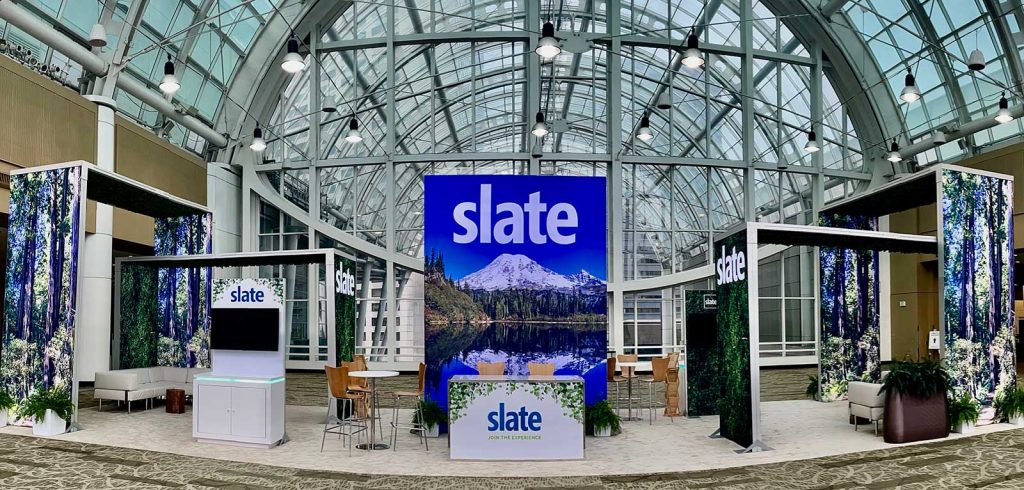
#6. LED Lights: Understanding the various color temperatures, lens, UL and ETL certification, module construction, etc. requires some research and patience. Like fabric, there are multiple ways to make LED lights cheaper, if cheaper is the only criteria. Skipping UL/ETL certification is one shortcut. Using exposed connections or alligator clips is another. Sadly, it’s nearly impossible to know what you are getting before you get the LED lightbox. However, in this case, the old adage rarely fails, “If it’s too good to be true, then it probably is.”
#7. Accessories: Most LED lightboxes are a one-trick pony. They are lightboxes. That’s it. But what if you want to add shelves, an iPad, a literature holder, wings, or headers? What if you want to connect it to other lightboxes or create a full inline or island display. That requires an exhibit builder who has engineered the extrusion to be multi-functional, stocks lightbox accessories and has the in-house talent to customize.
#8. Packaging: It’s easy to assume that your display will ship in high-quality cases and packaging. Sadly, that’s rarely true. Most manufacturers use disposable one-way shipping materials. Your lightbox arrives undamaged. Now you have to ship it to the next show or to another location, but there’s nothing to protect it or keep it organized. Insist on reusable shipping materials, which precludes cardboard, shrink wrap, and thin foam. All three will be destroyed after one use. See examples. While you may have to pay a little more, it’s an investment that keeps giving show after show, assembly after assembly.
#9. Assembly: It’s easy to overlook how the lightbox will be assembled but that would be a HUGE MISTAKE. Some require tools and a bag of loose parts. Others have push-button connectors. Others are “mostly” tool-less, but the hardware is cumbersome and/or unnecessarily complicated. Ask to see the instructions or an assembly video. Even if you aren’t planning to assemble it, could you put it together based on the instructions in a reasonable amount of time? Remember, time is money, especially on the show floor. No one wants surprises at a trade show, and a well-designed lightbox won’t make you sweat, literally or figuratively. Do the research and trust your gut.
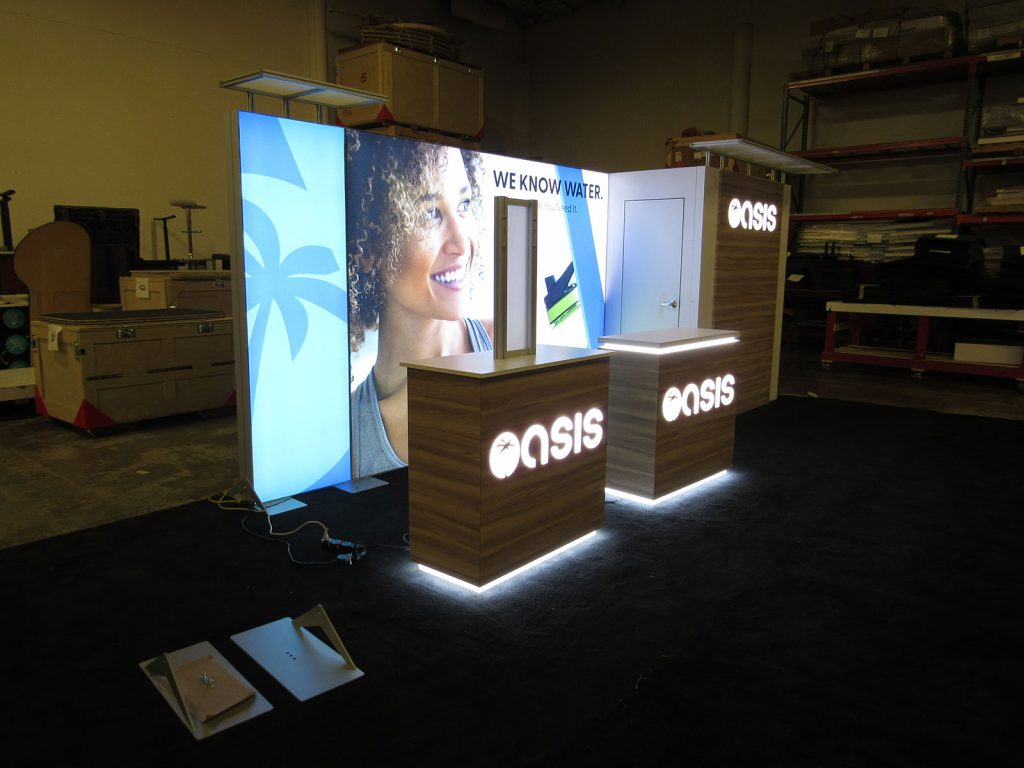
Rent or Buy a Fabric Lightbox or Backlit Lightbox
Classic Exhibits has been designing and building solutions since 1993. We’ve been honored as an Exhibitor Magazine Find-It Top 40 Exhibit Producer and an Event Marketer Fab 50 Exhibit Builder multiple times. Along with numerous Portable Modular Awards. We offer hundreds of lightbox solutions for both purchase and rental for trade shows, events, and environments.
With over 200 Distributor Partners throughout North America, there’s a Classic representative close by. Contact us today whether you need a durable hand sanitizer stand built to last, a rental display guaranteed to attract trade show attendees or a lightbox with all the bells and whistles. We’re not just different. We’re better.



